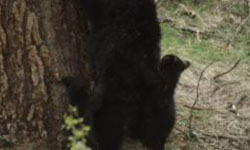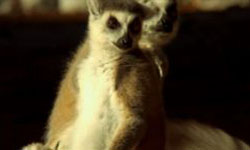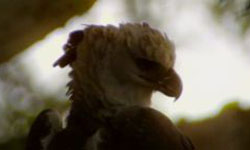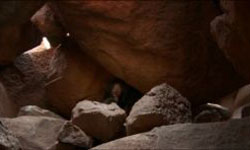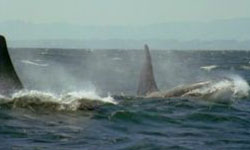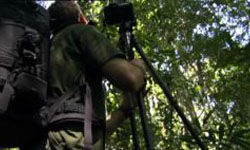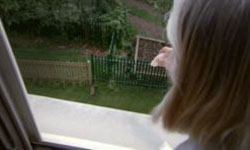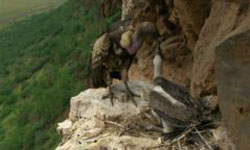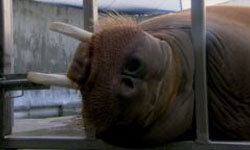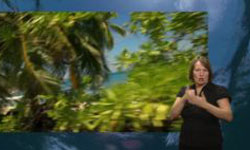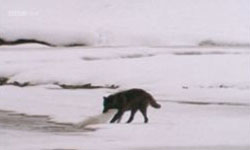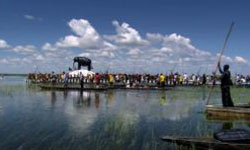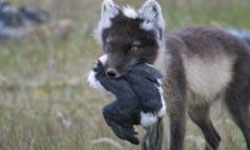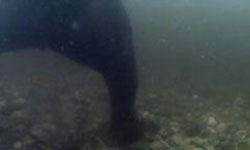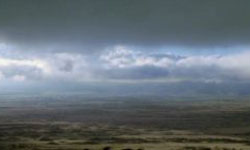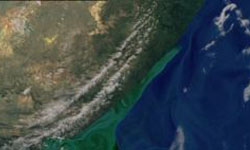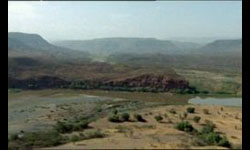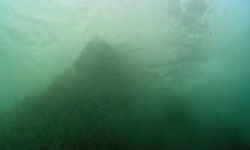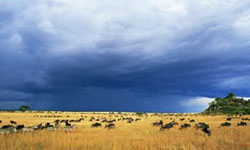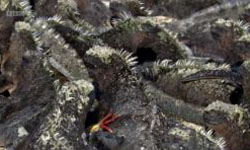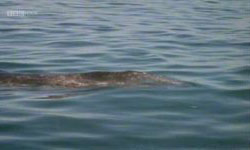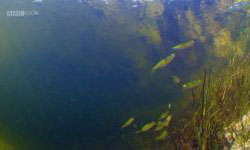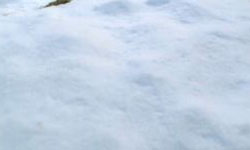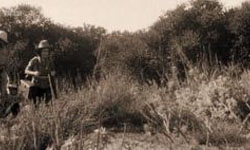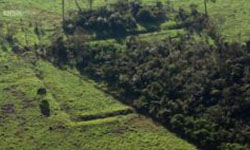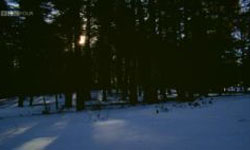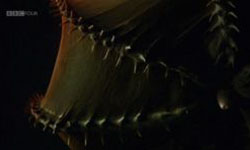Select one or more of these popular tags:
Wildlife documentary following the search for grizzly bears in the beautiful Cascade Mountains of Canada. Wildlife filmmaker Jeff Turner has spent a lifetime tracking grizzly bears around the world, and now he has come home to spend a year in the mountains of his youth to discover if the grizzly is still surviving in this beautiful area of British Columbia.
- TV-Recordings
- Biology
- TV-Recordings
- No subtitles
- 58
Wildlife documentary following the search for grizzly bears in the beautiful Cascade Mountains of Canada. Wildlife filmmaker Jeff Turner has spent a lifetime tracking grizzly bears around the world, and now he has come home to spend a year in the mountains of his youth to discover if the grizzly is still surviving in this beautiful area of British Columbia.
David Attenborough narrates the charming and fascinating story of some real-life animal romantics. There are show-offs and singers, dancers and fighters, stories of undercover affairs and heart-warming devotion.
- TV-Recordings
- Natural World
- No subtitles
- 60
David Attenborough narrates the charming and fascinating story of some real-life animal romantics. There are show-offs and singers, dancers and fighters, stories of undercover affairs and heart-warming devotion.
The harpy eagle is the most powerful bird of prey in the world, plucking monkeys from the branches of the jungle canopy. Rare and elusive, they are seldom seen, but with the discovery of a harpy nest in the remote Orinoco rainforest of Venezuela, wildlife film-maker Fergus Beeley has a unique opportunity to follow the life of a chick from birth to adulthood.
- TV-Recordings
- Biology
- TV-Recordings
- No subtitles
- 58
The harpy eagle is the most powerful bird of prey in the world, plucking monkeys from the branches of the jungle canopy. Rare and elusive, they are seldom seen, but with the discovery of a harpy nest in the remote Orinoco rainforest of Venezuela, wildlife film-maker Fergus Beeley has a unique opportunity to follow the life of a chick from birth to adulthood.
The Jungle Book's Baloo the bear character is based on the secretive sloth bear who lives in India's wildest places. The real Baloo does chase fancy ants, but his life is a lot tougher than that of his fictional friend.
- TV-Recordings
- Biology
- TV-Recordings
- No subtitles
- 60
The Jungle Book's Baloo the bear character is based on the secretive sloth bear who lives in India's wildest places. The real Baloo does chase fancy ants, but his life is a lot tougher than that of his fictional friend.
Jonathan Scott narrates the extraordinary story of the leopard - the one big cat that still survives across half the world while tigers, cheetahs and lions are all struggling. By following the lives of leopard mothers and their cubs in East Africa, the film investigates what it is about the natural history of these cats that makes them born survivors. Perhaps the most extraordinary revelation is that leopards are living undercover on farms and even in cities across Africa and Asia.
- TV-Recordings
- Biology
- Geography
- TV-Recordings
- No subtitles
- 60
Jonathan Scott narrates the extraordinary story of the leopard - the one big cat that still survives across half the world while tigers, cheetahs and lions are all struggling. By following the lives of leopard mothers and their cubs in East Africa, the film investigates what it is about the natural history of these cats that makes them born survivors. Perhaps the most extraordinary revelation is that leopards are living undercover on farms and even in cities across Africa and Asia.
The killer whale is one of the most feared predators in the ocean and most would consider it madness to enter the water with one. But New Zealander Dr Ingrid Visser thinks differently - and by swimming with her beloved whales she has come to know almost all of them by sight. But there\'s been an unusual number of deaths recently and Ingrid is on a mission to find out what is going on. Her findings reveal disturbing new information about the health of our oceans.
- TV-Recordings
- Biology
- Environmental Studies
- TV-Recordings
- No subtitles
- 30
The killer whale is one of the most feared predators in the ocean and most would consider it madness to enter the water with one. But New Zealander Dr Ingrid Visser thinks differently - and by swimming with her beloved whales she has come to know almost all of them by sight. But there\'s been an unusual number of deaths recently and Ingrid is on a mission to find out what is going on. Her findings reveal disturbing new information about the health of our oceans.
In the flooded forests of the Peruvian Amazon lives one of the world\'s rarest and most mysterious primates, the red-faced uakari monkey. Local people call them English monkeys because of their resemblance to sunburnt visitors. Now there is a new Englishman on the scene, Mark Bowler, a young biologist who battles through the forest in his quest to understand the monkeys\' secret lives.
- TV-Recordings
- Biology
- Geography
- TV-Recordings
- No subtitles
- 50
In the flooded forests of the Peruvian Amazon lives one of the world\'s rarest and most mysterious primates, the red-faced uakari monkey. Local people call them English monkeys because of their resemblance to sunburnt visitors. Now there is a new Englishman on the scene, Mark Bowler, a young biologist who battles through the forest in his quest to understand the monkeys\' secret lives.
Seals, parakeets and even pelicans that eat pigeons have all made London their home. That's as well as badgers, foxes, scorpions, and pigeons that ride the tube.
- TV-Recordings
- Biology
- TV-Recordings
- No subtitles
- 60
Seals, parakeets and even pelicans that eat pigeons have all made London their home. That's as well as badgers, foxes, scorpions, and pigeons that ride the tube.
Vultures are the birds that many people love to hate, but cameraman and naturalist Charlie Hamilton James sees them as beautiful and intelligent creatures that deserve respect. He believes that to appreciate them, people just need to spend time with them and he headed to East Africa to do exactly that
- TV-Recordings
- Natural World
- English subtitles
- 60
Vultures are the birds that many people love to hate, but cameraman and naturalist Charlie Hamilton James sees them as beautiful and intelligent creatures that deserve respect. He believes that to appreciate them, people just need to spend time with them and he headed to East Africa to do exactly that
Sivuqaq is an 18-year-old, larger-than-life captive pacific walrus. By now he should be a dad but things have not worked out. This is where reproduction scientist Holley Muraco comes in.
- TV-Recordings
- Natural World
- English subtitles
- 60
Sivuqaq is an 18-year-old, larger-than-life captive pacific walrus. By now he should be a dad but things have not worked out. This is where reproduction scientist Holley Muraco comes in.
Mark Meakin attempts to unravel the mysterious wanderings of the biggest fish in the sea.
- TV-Recordings
- Biology
- TV-Recordings
- No subtitles
- 48
Mark Meakin attempts to unravel the mysterious wanderings of the biggest fish in the sea.
Documentary following the lives of the members of the world's largest wolf pack in Yellowstone National Park. Daughters plot behind their father's back, sister slays sister and steals her lover, and a family is torn apart.
- TV-Recordings
- Biology
- TV-Recordings
- No subtitles
- 50
Documentary following the lives of the members of the world's largest wolf pack in Yellowstone National Park. Daughters plot behind their father's back, sister slays sister and steals her lover, and a family is torn apart.
Africa's wildest river is home to the most spectacular wildlife. Hippos fight for territory while herds of elephant, water buffalo and zebra depend on it for life.
- TV-Recordings
- Biology
- TV-Recordings
- No subtitles
- 60
Africa's wildest river is home to the most spectacular wildlife. Hippos fight for territory while herds of elephant, water buffalo and zebra depend on it for life.
The great flood in the Okavango turns 4,000 square miles of arid plains into a beautiful wetland. Elephant mothers guide their families on an epic trek across the harsh Kalahari Desert towards it, siphoning fresh water from stagnant pools and facing hungry lions. Hippos battle for territory, as the magical water draws in thousands of buffalo and birds, and vast clouds of dragonflies. Will the young elephant calves survive to reach this grassland paradise?
- TV-Recordings
- Biology
- Geography
- TV-Recordings
- No subtitles
- 59
The great flood in the Okavango turns 4,000 square miles of arid plains into a beautiful wetland. Elephant mothers guide their families on an epic trek across the harsh Kalahari Desert towards it, siphoning fresh water from stagnant pools and facing hungry lions. Hippos battle for territory, as the magical water draws in thousands of buffalo and birds, and vast clouds of dragonflies. Will the young elephant calves survive to reach this grassland paradise?
Every year grizzly bear families in North America depend for their survival on a spectacular natural event: the return of hundreds of millions of salmon from the Pacific Ocean to the mountain streams where they were born. The salmon travel thousands of miles to spawn and then die.
- TV-Recordings
- Biology
- TV-Recordings
- No subtitles
- 59
Every year grizzly bear families in North America depend for their survival on a spectacular natural event: the return of hundreds of millions of salmon from the Pacific Ocean to the mountain streams where they were born. The salmon travel thousands of miles to spawn and then die.
Each year more than one million wildebeest and zebra invade the Serengeti grasslands, making it a paradise for the predators that live there. But what happens when the herds move off again? We follow the moving story of one lion family\'s struggle to survive until the return of the great migration. Nature\'s Great Events tells the story of the epic trek of herds that follow the rains to fresh pastures, and the tale of the predators they leave behind.
- TV-Recordings
- Biology
- TV-Recordings
- No subtitles
- 59
Each year more than one million wildebeest and zebra invade the Serengeti grasslands, making it a paradise for the predators that live there. But what happens when the herds move off again? We follow the moving story of one lion family\'s struggle to survive until the return of the great migration. Nature\'s Great Events tells the story of the epic trek of herds that follow the rains to fresh pastures, and the tale of the predators they leave behind.
A mighty army of dolphins, sharks, whales, seals and gannets hunt down the billions of sardines along South Africa\'s east coast each winter. This is the Sardine Run: an underwater Armageddon, the greatest gathering of predators anywhere on the planet, and the most spectacular event in the world\'s oceans.
- TV-Recordings
- Biology
- Environmental Studies
- TV-Recordings
- No subtitles
- 59
A mighty army of dolphins, sharks, whales, seals and gannets hunt down the billions of sardines along South Africa\'s east coast each winter. This is the Sardine Run: an underwater Armageddon, the greatest gathering of predators anywhere on the planet, and the most spectacular event in the world\'s oceans.
The great flood in the Okavango turns 4,000 square miles of arid plains into a beautiful wetland. Elephant mothers guide their families on an epic trek across the harsh Kalahari Desert towards it, siphoning fresh water from stagnant pools and facing hungry lions. Hippos battle for territory, as the magical water draws in thousands of buffalo and birds, and vast clouds of dragonflies. Will the young elephant calves survive to reach this grassland paradise?
- TV-Recordings
- Biology
- Environmental Studies
- TV-Recordings
- No subtitles
- 59
The great flood in the Okavango turns 4,000 square miles of arid plains into a beautiful wetland. Elephant mothers guide their families on an epic trek across the harsh Kalahari Desert towards it, siphoning fresh water from stagnant pools and facing hungry lions. Hippos battle for territory, as the magical water draws in thousands of buffalo and birds, and vast clouds of dragonflies. Will the young elephant calves survive to reach this grassland paradise?
Every summer in the seas off Alaska humpback whales, sea lions and killer whales depend on an explosion of plant life, the plankton bloom. It tranforms these seas into the richest on Earth. But will these animals survive to enjoy the great feast?
- TV-Recordings
- Biology
- TV-Recordings
- No subtitles
- 59
Every summer in the seas off Alaska humpback whales, sea lions and killer whales depend on an explosion of plant life, the plankton bloom. It tranforms these seas into the richest on Earth. But will these animals survive to enjoy the great feast?
-
Nature's Microworlds
-
BBC
Series in which Steve Backshall looks at some of the world's most iconic ecosystems
- TV-Recordings
- No subtitles
- 240
Series in which Steve Backshall looks at some of the world's most iconic ecosystems
A visit to arguably the most famous archipelago on Earth, the Galapagos. It's home to a myriad of bizarre and unique creatures, endemic to these islands - but how did they get here and what is the key to these extraordinary islands that allows them to thrive? The programme reveals that this key holds not just the secret to life here, but also to how Darwin was able to leave with the ideas that would revolutionise biology.
- TV-Recordings
- Biology
- Environmental Studies
- TV-Recordings
- No subtitles
- 30
A visit to arguably the most famous archipelago on Earth, the Galapagos. It's home to a myriad of bizarre and unique creatures, endemic to these islands - but how did they get here and what is the key to these extraordinary islands that allows them to thrive? The programme reveals that this key holds not just the secret to life here, but also to how Darwin was able to leave with the ideas that would revolutionise biology.
Monterey Bay on California's coast is one of the most diverse marine ecosystems in the world, its giant kelp forest bursting with life, from microscopic plankton to visiting ocean giants. The secret key to success in such a busy microworld is balance. Steve Backshall guides us through the unique geography of the bay and introduces some of its key characters in a quest to find the one species that keeps life in the kelp forest in check.
- TV-Recordings
- Biology
- TV-Recordings
- No subtitles
- 30
Monterey Bay on California's coast is one of the most diverse marine ecosystems in the world, its giant kelp forest bursting with life, from microscopic plankton to visiting ocean giants. The secret key to success in such a busy microworld is balance. Steve Backshall guides us through the unique geography of the bay and introduces some of its key characters in a quest to find the one species that keeps life in the kelp forest in check.
Steve Backshall tries to discover just what makes it possible for a river to stop in the middle of a desert. The Okavango is the world's largest inland delta and home to a one of Africa's greatest congregations of wildlife, and in asking the difficult questions Steve reveals the astounding secret to its existence.
- TV-Recordings
- Geography
- TV-Recordings
- No subtitles
- 30
Steve Backshall tries to discover just what makes it possible for a river to stop in the middle of a desert. The Okavango is the world's largest inland delta and home to a one of Africa's greatest congregations of wildlife, and in asking the difficult questions Steve reveals the astounding secret to its existence.
In a revelatory look at Svalbard, the most northerly region in the series, Steve Backshall leaves no stone unturned as he unravels the secrets that lie covered in ice for most of each year. Svalbard is cold, dark and foreboding, yet it is home to the world's largest land predator and the most northerly population.
- TV-Recordings
- Geography
- TV-Recordings
- No subtitles
- 30
In a revelatory look at Svalbard, the most northerly region in the series, Steve Backshall leaves no stone unturned as he unravels the secrets that lie covered in ice for most of each year. Svalbard is cold, dark and foreboding, yet it is home to the world's largest land predator and the most northerly population.
A look at one of the most famous habitats on the planet, the Serengeti in East Africa, a vast grassland that is home to some of the greatest concentrations of herbivores on the continent. But what is the key to this exceptional grassland that allows such density and diversity?
- TV-Recordings
- Biology
- Environmental Studies
- TV-Recordings
- No subtitles
- 30
A look at one of the most famous habitats on the planet, the Serengeti in East Africa, a vast grassland that is home to some of the greatest concentrations of herbivores on the continent. But what is the key to this exceptional grassland that allows such density and diversity?
Steve Backshall lifts the lid on an incredible world of intricate relationships and unexpected hardship in the Amazon rainforest, explores the way that the jungle's inhabitants interact, and reveals a hidden secret that might just be what keeps the whole place alive.
- TV-Recordings
- Biology
- Environmental Studies
- TV-Recordings
- No subtitles
- 30
Steve Backshall lifts the lid on an incredible world of intricate relationships and unexpected hardship in the Amazon rainforest, explores the way that the jungle's inhabitants interact, and reveals a hidden secret that might just be what keeps the whole place alive.
n Australia's red centre, Steve Backshall reveals two-metre-tall kangaroos, the world's most venomous snake and a burrowing toad living among the throng of animals. Parched by the sun, scorched by fire and prone to unpredictable floods, the heart of this island continent is as inhospitable as it gets
- TV-Recordings
- Natural World
- TV-Recordings
- No subtitles
- 30
n Australia's red centre, Steve Backshall reveals two-metre-tall kangaroos, the world's most venomous snake and a burrowing toad living among the throng of animals. Parched by the sun, scorched by fire and prone to unpredictable floods, the heart of this island continent is as inhospitable as it gets
Steve Backshall looks at the Scottish Highlands, home to some of the most iconic wildlife in the British Isles. The two contrasting landscapes of open moor and Caledonian forest are both crucially important to their wild inhabitants and yet the history of the Highlands show that they shouldn't exist side by side.
- TV-Recordings
- Geography
- English subtitles
- 30
Steve Backshall looks at the Scottish Highlands, home to some of the most iconic wildlife in the British Isles. The two contrasting landscapes of open moor and Caledonian forest are both crucially important to their wild inhabitants and yet the history of the Highlands show that they shouldn't exist side by side.
Steve Backshall takes us to a place few have ever visited - the deep sea. 99 per cent of the space on Earth inhabited by life is under the ocean and almost 90 per cent of this is deeper than a kilometre, a place of perpetual darkness and crushing pressure.
- TV-Recordings
- Natural World
- TV-Recordings
- No subtitles
- 30
Steve Backshall takes us to a place few have ever visited - the deep sea. 99 per cent of the space on Earth inhabited by life is under the ocean and almost 90 per cent of this is deeper than a kilometre, a place of perpetual darkness and crushing pressure.
In the spectacular Yellowstone where wolves, bears, coyotes, bison and elk roam vast grasslands, wetlands and forests, Steve Backshall looks for the answer to a puzzle.
- TV-Recordings
- Natural World
- TV-Recordings
- No subtitles
- 30
In the spectacular Yellowstone where wolves, bears, coyotes, bison and elk roam vast grasslands, wetlands and forests, Steve Backshall looks for the answer to a puzzle.

